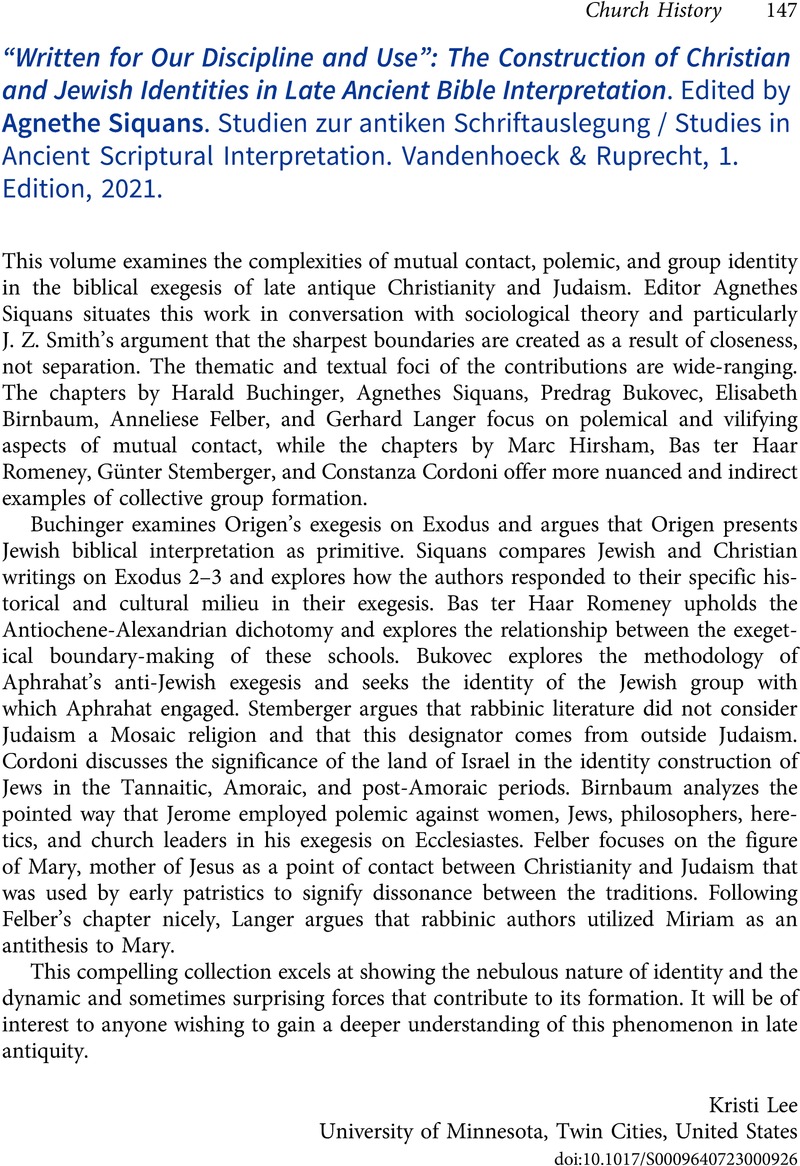No CrossRef data available.
Article contents
“Written for Our Discipline and Use”: The Construction of Christian and Jewish Identities in Late Ancient Bible Interpretation. Edited by Agnethe Siquans. Studien zur antiken Schriftauslegung / Studies in Ancient Scriptural Interpretation. Vandenhoeck & Ruprecht, 1. Edition, 2021.
Review products
“Written for Our Discipline and Use”: The Construction of Christian and Jewish Identities in Late Ancient Bible Interpretation. Edited by Agnethe Siquans. Studien zur antiken Schriftauslegung / Studies in Ancient Scriptural Interpretation. Vandenhoeck & Ruprecht, 1. Edition, 2021.
Published online by Cambridge University Press: 28 July 2023
Abstract
An abstract is not available for this content so a preview has been provided. Please use the Get access link above for information on how to access this content.

- Type
- Book Reviews and Notes
- Information
- Copyright
- Copyright © The Author(s), 2023. Published by Cambridge University Press on behalf of American Society of Church History


